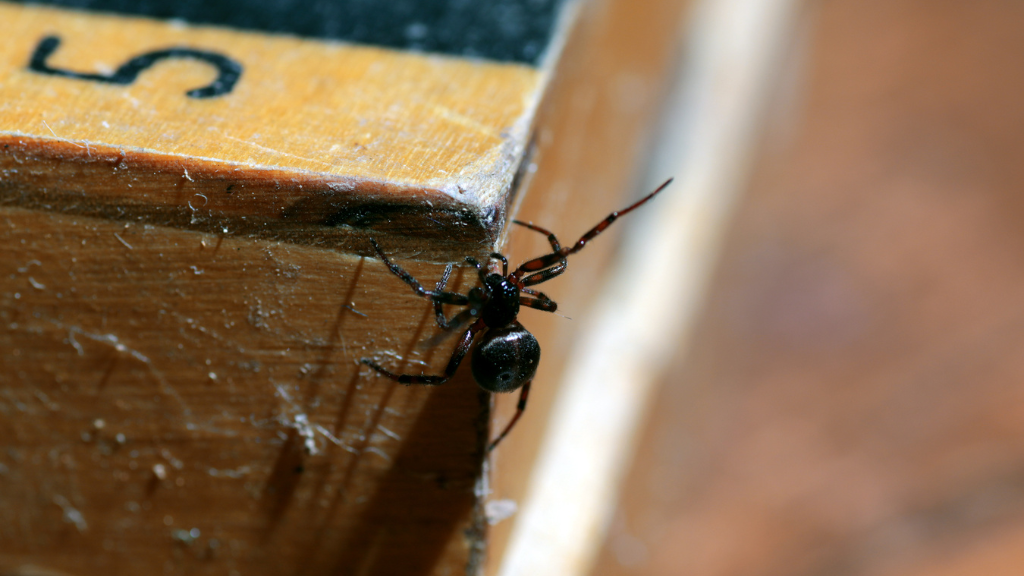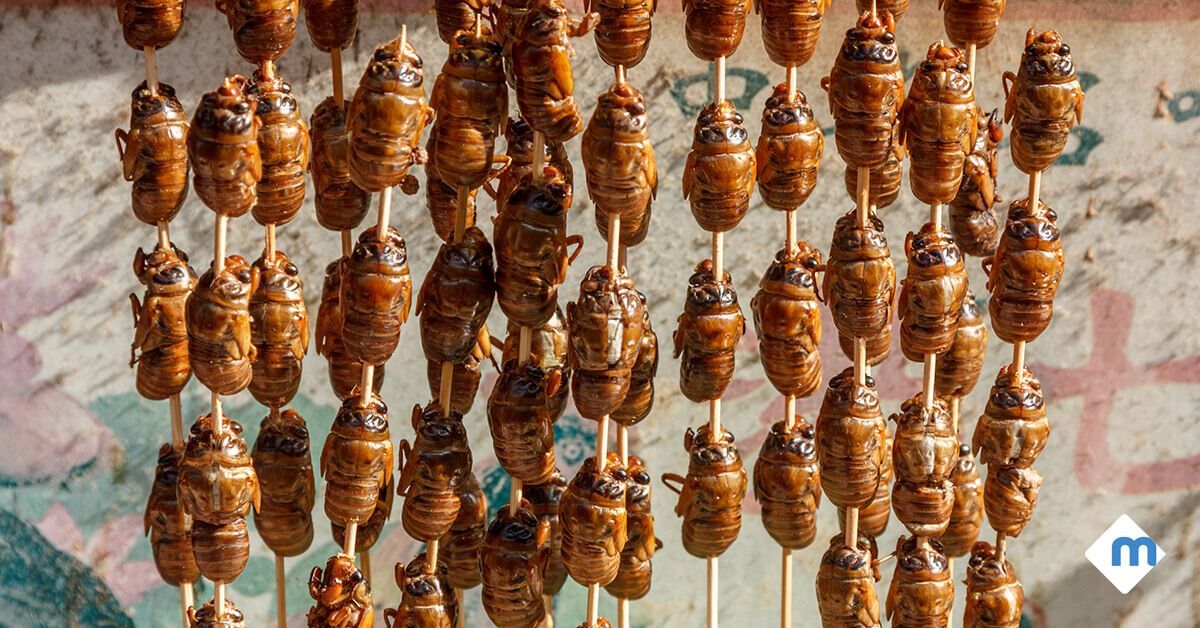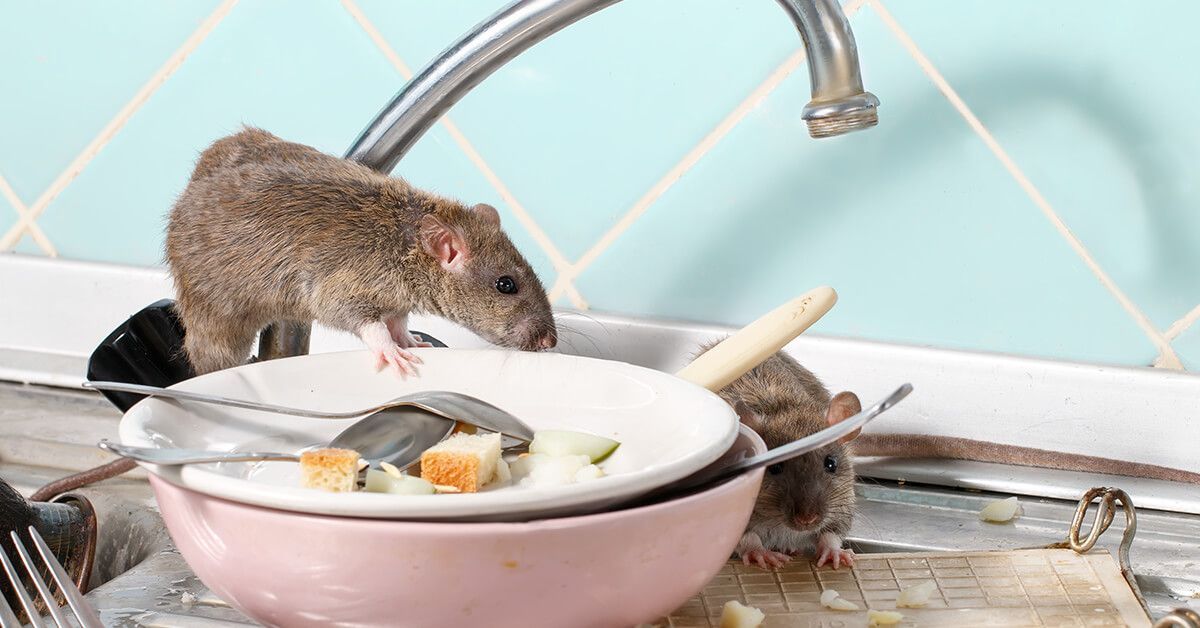Venomous spiders are found all over the world. These spiders inject a dangerous poison, called venom, into the bodies of their prey, causing necrosis, paralysis, seizures, or death, depending on the type of spider. Fortunately, many of the most venomous spiders in the world are not found in the United States, but there are a few species to be aware of: the black widow spider, hobo spider, and brown recluse spider.
So what makes a spider venomous, and how can you recognize these arachnids? Here’s what you need to know to protect yourself and the people you care about.

WHAT ARE VENOMOUS SPIDERS?
Most spiders have venom glands, and the majority of all spiders are venomous. These glands tend to be located under the spider’s fang-like mouthpieces known as chelicerae. The venom glands may also be found in the area under the carapace. When venom is injected, it travels through venom ducts that exit through the chelicerae and into the spider’s fangs.
Why do spiders have venom? Venom provides spiders with both a way to protect themselves and a way to kill their prey. In the past, spiders may have used their webs or colorful patterns to protect themselves, but as they developed and evolved, venoms came to the forefront. Spiders that were better able to survive were more likely to reproduce, so they continued to breed and evolve in a way that made them more dangerous each generation.
The venom spiders have today is extremely potent because spiders have evolved to protect themselves from predators of all types, from mice and insects up to humans. Essentially, they want to have more than enough venom rather than too little when they attack another creature. It’s for that reason that such a small arachnid can cause serious—potentially even fatal—bites for humans.
We’re going to focus on venomous spiders that are dangerous to humans, but keep in mind that other animals, such as cats or dogs, may have different reactions to spider bites. Always consult your veterinarian with questions about medical attention for pets.
The chelicerae are used to inject venom into the spider’s prey with the intention of immobilizing it and beginning to digest it externally.
Most spider venom is a neurotoxin that affects the nerves of the prey. After the venom is injected, the toxin goes to work and causes pain and other effects, like trouble breathing or swelling. The exact effects depend on the spider and the type of venom injected into the body.
In humans, it’s common for the abdominal region to be affected most severely by a bite from a black widow, for example, but a bite from a tarantula may feel no worse than a bee sting with regional pain and swelling.
Although it’s not the largest spider in the world, the Sydney funnel-web spider ( Atrax robustus) is the most venomous spider in the world. It’s native to Australia and can also be found in some zoos and scientific research laboratories around the world.
According to the Guinness World Records, the Sydney funnel-web spider is the most dangerous spider to humankind because its venom has the potential to kill a human adult within 15 minutes.
Between male and female Sydney funnel-web spiders, the males produce a stronger bite with more powerful venom. They are often found alone, while female spiders will be found in colonies of around 100.
Interestingly, many people in Australia have never seen this dangerous pest, even though it is native to Sydney and New South Wales. Why? It likes to stay under logs or in foliage, so it’s not apparent that it’s in a garden or the woods until it has been disturbed.
While it would be nice to be without dangerous spiders, the truth is that there are a few venomous spiders here in the United States. The two that people come across most often are the black widow spider ( Latrodectus mactans) and the brown recluse spider ( Loxosceles reclusa). A third venomous spider, the hobo spider ( Tegenaria agrestis) , is also found in the United States but is much less common.
How do you recognize these species when they might be similar in appearance to non-dangerous spiders, such as wolf spiders, orb weavers, or common black house spiders? Here’s how to identify dangerous spiders in the United States:
BLACK WIDOW SPIDER
The northern black widow spider ( Latrodectus variolus) has a row of red spots that run down the middle of the upper abdomen. It has two bars on its underside. Sometimes the markings can appear white or yellow. Unlike the southern black widow, this species can also have red or brown legs. The southern black widow spider ( Latrodectus mactans) is shiny and black. It has a large abdomen shaped like a globe with the hallmark red hourglass mark on its underside.
Both U.S.-based species are around ½ inch long (1.5 inches when including the legs).
The northern black widow is found throughout the eastern United States in the area between southern Canada and Florida. It is also found in parts of Texas, Kansas, and Oklahoma. The southern black widow is primarily found in the southeastern states, but it may be found in northern states including New York as well as western states like Texas.
Seek emergency medical care for a bite from a black widow. The venom from a black widow’s bite is a neurotoxin that can spread throughout the entire body. This toxin causes pain, burning, swelling, trouble breathing, and other serious symptoms. Rarely, a bite can lead to death in a human.
BROWN RECLUSE SPIDER
APPEARANCE
Brown recluse spiders ( Loxosceles recluse) are uniformly brown and have a violin-shaped mark on the area just behind the eyes. Unlike many spiders, the brown recluse has only six eyes.
The brown recluse is approximately the size of a quarter when outstretched.
Brown recluses are found in most parts of the United States. They like to live in undisturbed areas, like in garages or under window moldings.
A brown recluse bite is serious and needs medical attention right away. The venom that this spider injects causes necrosis, which means that the tissue that has been affected, as well as the surrounding tissue, may die. Severe bites can lead to deep tissue damage that may require surgical intervention. It’s rare for anyone to have a serious illness or to die from a brown recluse bite, but it is possible—especially if someone is allergic.
HOBO SPIDER
APPEARANCE
The hobo spider ( Tegenaria agrestis ) is a small brown spider. Male hobo spiders have swollen pedipalps that look a little bit like boxing gloves. The back of the abdomen has chevron markings. Females don’t have swollen pedipalps. However, the chevron tends to be more pronounced since they’re larger spiders.
Usually, the hobo spider is around ½ to ¾ inches in length. With its legs extended, it’s up to 1.5 inches in diameter.
Hobo spiders are typically found in the northwestern U.S. and Alaska. They are in states including Idaho, Utah, Montana, Wyoming, Washington, and Oregon within the mainland United States. They’re also found outside of the country in places like Canada, Western and Central Asia, and Europe.
Seek medical attention if you suspect you’ve been bitten by a hobo spider. This spider’s bite contains a type of venom that causes necrosis. The venom will damage human tissue, and it’s common to see an open sore as a result.
You may not immediately notice a bite after coming into contact with a spider, so keep an eye out for signs of a reaction afterward. If you see fang marks on your skin or start to notice swelling, pain, trouble breathing, or any other type of abnormal reaction, reach out to your medical provider or call 911 right away. If you can, take a photo of the spider or take it (if deceased) to the emergency room with you.
Since the brown recluse is the most venomous spider that lives in the U.S., you should be able to tell what it looks like and know what to do in case of a bite.
The brown recluse spider has only six eyes and is around the size of a quarter. It has markings that look like a violin on its upper thorax. The neck of the violin shape points down toward the abdomen. In some cases, they have red fangs.
Brown recluse spiders can live in hot or cold temperatures, inside or outside, and don’t need much food to survive.
If you are bitten by the brown recluse, consider the bite an emergency. Though the spider is not usually aggressive, a bite from it can lead to necrosis that causes extreme damage and pain. The tissues around the bite will die, and infection is possible.
Spiders are found all over the world and play an important role in the ecosystem, but that doesn’t mean you want them in your home—especially the ones that pose a risk to the people living in it.
If you’re seeing concerning spider activity in or around your house, contact the pest professionals at Moxie. We can help you identify the species and use our pet- and family-friendly products to eliminate them. Call us to speak with an expert so you can get the solution you need to feel at home in your home.




